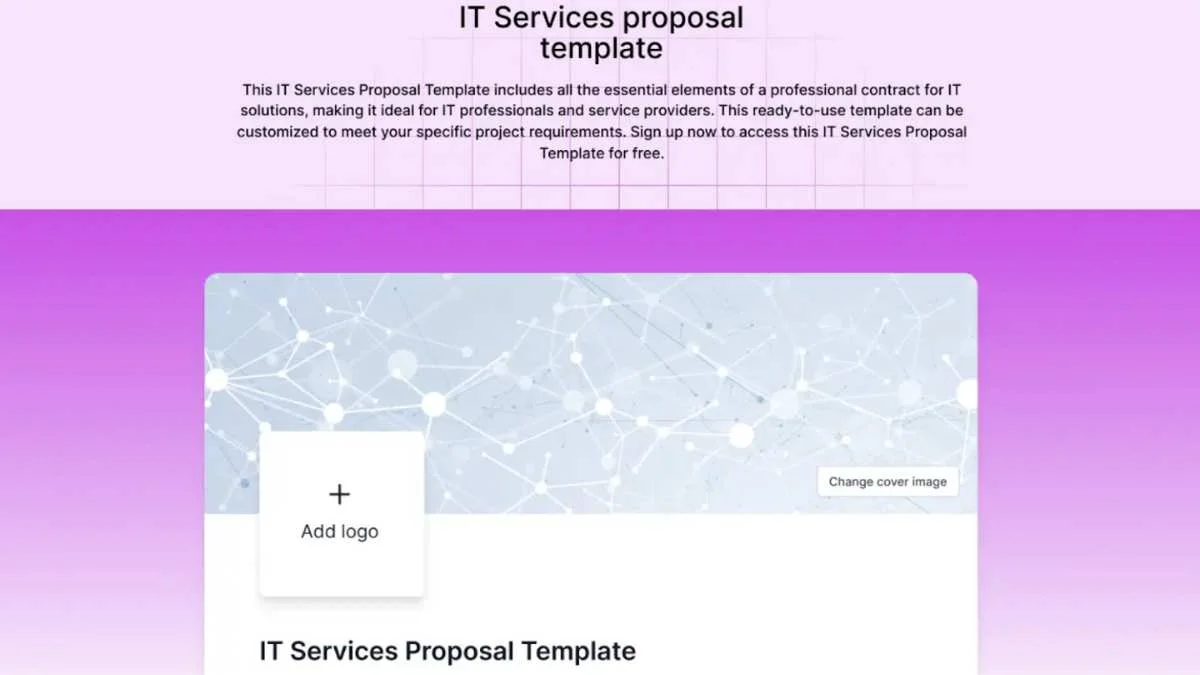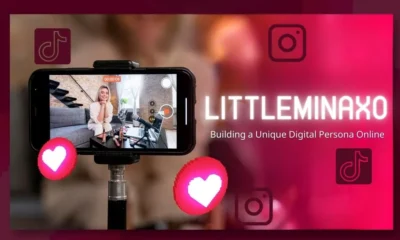TECHNOLOGY
IT Services Proposal Template: Save Time & Win More Projects

Crafting the Perfect IT Services Proposal: Why It Matters
In the fast-evolving world of IT, businesses are constantly seeking reliable service providers to enhance their technology infrastructure, ensure cybersecurity, and optimize operations. However, with increasing competition in the IT services sector, simply offering expertise is no longer enough—your proposal must stand out. A well-crafted IT services proposal is your opportunity to make a strong first impression, demonstrate your understanding of the client’s challenges, and clearly outline how your solutions will address their needs. An effective proposal not only showcases technical knowledge but also highlights professionalism, reliability, and the ability to deliver measurable results. By structuring your proposal strategically, you can increase your chances of securing contracts, fostering long-term client relationships, and growing your business.
Client Needs: The Foundation of a Strong Proposal
Before drafting your IT services proposal template, it is essential to gain a deep understanding of your client’s unique needs and pain points. Every business has different IT requirements—some may struggle with outdated infrastructure, while others face cybersecurity threats, inefficient workflows, or the need for scalable cloud solutions. Your proposal should not be a one-size-fits-all document; instead, it must be tailored to address the specific challenges of the client. This involves conducting preliminary research, asking relevant questions, and gathering insights into their existing IT setup. By demonstrating that you fully understand their business operations and IT goals, you establish credibility and position yourself as a trusted advisor rather than just another service provider.
Key Components of an Effective IT Services Proposal
A well-structured IT services proposal must be detailed, engaging, and easy to navigate. The following sections outline the key elements that should be included:
1. Executive Summary: Making a Strong First Impression
The executive summary serves as a snapshot of your proposal, providing the client with a concise overview of your services, the problems you will solve, and the anticipated outcomes. This section should immediately capture the client’s interest by focusing on their primary concerns and how your solutions align with their business objectives. It should be written in a persuasive yet professional tone, ensuring the client understands why your company is the right choice.
2. Detailed Breakdown of IT Services and Solutions
Clearly defining the services you offer is crucial in helping the client understand the scope of your capabilities. Whether your focus is on managed IT support, cybersecurity, cloud computing, network infrastructure, or IT consulting, each service should be explained in a way that directly addresses the client’s needs. For example, if you are providing managed IT services, describe how proactive monitoring and 24/7 support can minimize downtime. If you offer cybersecurity solutions, explain how advanced threat detection and compliance measures can protect their business from cyberattacks. Providing real-world examples or case studies can further enhance credibility and help the client visualize the benefits of working with you.
3. Project Timeline and Implementation Plan
One of the biggest concerns clients have when hiring IT service providers is how the implementation process will unfold. Clearly outlining a structured timeline ensures transparency and sets realistic expectations. This section should detail the various phases of the project, from initial assessment and planning to execution, testing, and post-implementation support. Providing an estimated timeline for each phase helps the client understand when they can expect tangible results and reassures them that your team follows a systematic approach.
4. Pricing Structure and Payment Terms
Transparency in pricing is crucial for building trust and avoiding misunderstandings later in the project. Whether you offer fixed-rate packages, hourly billing, or subscription-based services, the pricing structure should be clearly defined with a breakdown of costs. Additionally, outline payment terms, invoicing schedules, and any potential additional costs that may arise during the project. This section should also mention any discounts for long-term contracts or bundled services, encouraging the client to consider extended partnerships.
5. Differentiating Your Business: Why Choose Us?
With numerous IT service providers in the market, it is essential to highlight what sets your company apart. This section should emphasize your industry experience, technical expertise, customer-centric approach, and commitment to innovation. Mentioning relevant certifications, partnerships with leading technology providers, and success stories from previous clients can further strengthen your credibility. If your team utilizes advanced project management software to enhance efficiency, mention it as a key advantage. Below is an overview of some top project management tools used by IT service providers and accounting firms:
Best Proposal Software Options for IT Service Providers and Accountants
A strong proposal can make all the difference when closing deals and winning clients. The right proposal software streamlines the process, providing templates, automation, and tracking features to enhance efficiency. Here are some of the best options:
1. Cone
Cone is an all-in-one proposal management software that simplifies document creation, e-signatures, and client follow-ups. With its intuitive interface and automation features, businesses can save time and improve their proposal acceptance rates.
2. Qwilr
Qwilr transforms traditional proposals into interactive, web-based documents. Its sleek design capabilities allow businesses to create engaging, media-rich proposals that leave a lasting impression on clients.
3. PandaDoc
PandaDoc offers an end-to-end solution for proposal creation, e-signatures, and contract management. Its built-in templates and real-time tracking help businesses manage proposals efficiently while ensuring a seamless client experience.
4. Proposify
Proposify provides structured, customizable proposal templates and analytics tools that help businesses track client engagement. Its streamlined workflow makes it easier to create, send, and close deals faster.
By using these proposal software options, businesses can enhance their professionalism, improve workflow efficiency, and increase their chances of securing new clients.
6. Terms and Conditions: Setting Clear Expectations
A well-defined terms and conditions section ensures both parties are aligned on project scope, service-level agreements (SLAs), confidentiality policies, and termination clauses. Clearly outlining these details helps prevent disputes and ensures a smooth working relationship.
7. Call to Action: Next Steps for Collaboration
Every proposal should end with a strong call to action, guiding the client toward the next steps. Whether it’s scheduling a follow-up meeting, signing a contract, or requesting further details, make it easy for the client to take action. Providing multiple contact options and ensuring availability for further discussions can help seal the deal.
Final Thoughts: Turning Proposals into Long-Term Partnerships
An IT services proposal is more than just a document—it is a sales tool that can convert prospects into loyal clients. By addressing client-specific needs, presenting clear solutions, and demonstrating your company’s reliability, you can increase your chances of winning contracts. Additionally, leveraging advanced project management tools enhances operational efficiency and ensures seamless execution of IT projects. Whether you are a small IT consulting firm or a large managed services provider, a well-crafted proposal is key to long-term business growth and success.
-

 BIOGRAPHY6 months ago
BIOGRAPHY6 months agoBehind the Scenes with Sandra Orlow: An Exclusive Interview
-

 HOME1 year ago
HOME1 year agoDiscovering Insights: A Deep Dive into the //vital-mag.net blog
-

 HOME1 year ago
HOME1 year agoSifangds in Action: Real-Life Applications and Success Stories
-

 BIOGRAPHY1 year ago
BIOGRAPHY1 year agoThe Woman Behind the Comedian: Meet Andrew Santino Wife




























